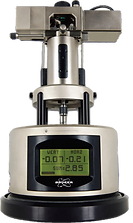


Nanoporous Metal evolves from the self-organization of atoms at solid/liquid interfaces. It manifests the underlying kinetics and provides exciting properties and functionalities.
Qing Chen, HKUST, The Hong Kong University of Science and Technology
Batteries power small electronics, cars, and even the electricity grid, enabling our transition towards renewable energy sources.


Structural Evolution plays a crucial role in determining the lifetime of electrodes. Understanding how structures evolve at nanoscales paves the way toward stable electrodes for high-performance batteries, electrolyzers, and sensors alike.
In-situ characterization of high-capacity electrodes to tackle stability issues.

Prof. Qing Chen holds a bachelor's degree in Polymer Science from Zhejiang University and a PhD degree in Materials Science from Arizona State University. He attained his postdoctoral training at Harvard University. He is currently affiliated with both the Department of Mechanical and Aerospace Engineering and the Department of Chemistry at the Hong Kong University of Science and Technology (HKUST). He is also the associate director of the Energy Institute, HKUST. (CV)

PhD (w/ Prof. G. Luo @ Sustech)

Postdoc

PhD

MPhil

PhD (w/ Prof. Baoling Huang)

MPhil

Postdoc

PhD (w/ Prof. Chunyi Zhi @ CityU)

MPhil

Research Assistant

PhD
Group Alumni:
Zhien Wang - PhD @ MIT
Wenqing Ruan - Faculty @ Shenzhen University
Guoyin Zhu - Faculty @ Nanjing University of Information Sci & Tech
Anson Tsang - PhD @ Princeton
Yuan Xu - Postdoc @ Shenzhen University
Jiatao Mao - Scientist @ BYD
Congcheng Wang - Postdoc @ Georgia Tech
Yiting Zheng - Consultant @ Exponent
Shida Yang - Scientist @ CATL
Jie Li - Postdoc @ University of Stuttgart
Yunhe Zhao - Scientist @ NAMI

Yi Z. Decoding the Mechanisms of Reversibility Loss in Rechargeable Zinc-Air Batteries. Nano Lett. (2023). >> view the article

Chen Q. Spontaneous Bicontinuous Nanoporous Metals with Self-Organized
Functionalities (Perspective). Chem. Mater. (2022). >> view the article

Zheng Y. et al. Electrochemical oxidative rearrangement of
tetrahydro-b-carbolines in a zero-gap flow cell. Chem. Sci. (2022).
>> view the article





